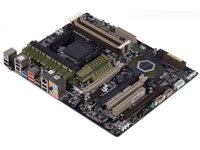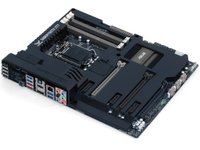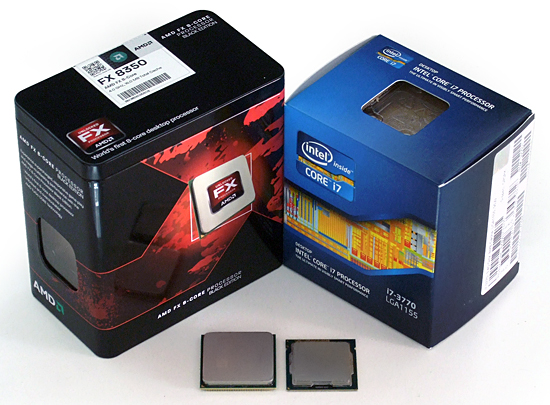FX Vs. Core i7: Exploring CPU Bottlenecks And AMD CrossFire
AMD and Intel continue serving up increasingly faster CPUs. But graphics card performance is accelerating even faster. Is there still such a thing as processor-bound gaming? We take two Radeon HD 7970s, high-end desktop CPUs, and a few games to find out.
Chasing Bottlenecks To Eyefinity (But Not Beyond)
We've seen processor performance double every three to four years. And yet, some of the most demanding game engines we've tested are as old as the Core 2 Duo that still resides in my office PC. Surely, CPU bottlenecks would be a thing of the past, right? Well, as it turns out, GPU performance speeds ahead at an even faster rate than that of host processors. And so, the debate over whether to buy a faster CPU or even more graphics muscle rages on.
There comes a point where it's pointless to continue the battle, though. For us, that happened when our games ran smoothly at our largest monitor's 2560x1600 native resolution. It simply didn't matter if a faster component took us from an average of 120 to 200 frames per second.
In response to the stagnation caused by increasingly faster components, but limited resolutions, AMD introduced its Eyefinity technology as Nvidia responded with Surround. Both expand beyond a single display, making 5760x1080 a very playable resolution on high-end GPUs. In fact, a trio of 1920x1080 displays is both less expensive and more engrossing than a single 2560x1600 screen, giving us the perfect excuse to splurge on some extra pixel-pushing power.
But does a display surface stretching 5760x1080 require any additional processing muscle in order to prevent bottlenecks? Ah, suddenly that becomes an interesting question again.
Up until now, when we've used AMD's GPUs, we've typically paired them with its competition's processors. Is such a move backed by hard data? Previously, based on plenty of benchmark results, we would have said so. However, the company has a new architecture available, so we bought a boxed FX-8350 to challenge prior convention. After all, there was a lot to like in AMD FX-8350 Review: Does Piledriver Fix Bulldozer's Flaws?
Entering this contest at a heavy economical disadvantage, Intel’s Core i7-3770K needs to prove that it's not only faster than the AMD chip in games, but fast enough to overcome its price premium in our value analysis.


Although both of the motherboards we're using come from Asus' Sabertooth family, the company charges more for its LGA 1155-equipped model, further complicating the value story for Intel. We picked these platforms specifically to achieve the ultimate fairness from a performance standpoint, without pricing getting in the way.
Get Tom's Hardware's best news and in-depth reviews, straight to your inbox.
Current page: Chasing Bottlenecks To Eyefinity (But Not Beyond)
Next Page Test Settings And Benchmarks-
A Bad Day ReplyWe were hoping that AMD's Piledriver update would break that trend, but even a handful of impressive advancements aren't enough to match the effectiveness of AMD's graphics team. Might Steamroller be the evolutionary step forward needed to unleash the GCN architecture's peak performance?
I disagree. What's needed is even stronger push on the developers to use more than four cores, effectively, not some 100% load on one core and 10% on the other five cores. -
acktionhank Great article and very informative. The FX-8350 really held it's own until it came down to Skyrim.Reply
A Bad DayI disagree. What's needed is even stronger push on the developers to use more than four cores, effectively, not some 100% load on one core and 10% on the other five cores.
I thought more cores were for multi-tasking, as in having multiple programs running simultaneously. It would suck to turn on BF3 and everything else running on my PC simply shut down because the CPU is under 100% utilization. How would i be able to play BF3 while streaming/playing some HD content on my TV that's hooked up to my same computer.
-
alidan acktionhankGreat article and very informative. The FX-8350 really held it's own until it came down to Skyrim.I thought more cores were for multi-tasking, as in having multiple programs running simultaneously. It would suck to turn on BF3 and everything else running on my PC simply shut down because the CPU is under 100% utilization. How would i be able to play BF3 while streaming/playing some HD content on my TV that's hooked up to my same computer.Reply
single core performance... look up some other benchmarks, where they use itunes to encode things, or when i believe winzip went from single core to multicore, it shows a GREAT difference more cores can do to performance.
the problem is that few games and few programs really scale, sure, pro applications almost always take advantage of whatever you put in them, but consumer, different story.
more cores can offer more multitasking, but they also allow the load to be shifted from one core to all 4 cores and get over all more performance when properly coded. -
Someone Somewhere Personally I'd like to see the i5-3570K included in here. It's closer in price to the 8350, but should perform more like the 3770K (as the games are unlikely to use more than 4 threads).Reply -
Crashman A Bad DayI disagree. What's needed is even stronger push on the developers to use more than four cores, effectively, not some 100% load on one core and 10% on the other five cores.I'm calling BS on this one because AMD's "eight cores" are actually four modules, on four front ends, with four FP units. Games have historically been limited by FP units specifically and front ends in general, no? What I'm seeing is that Intel's per-core IPC appears to be a little higher, when two different FOUR "full" CORE processors are compared.Reply -
de5_Roy like the article.Reply
woulda liked to see how a 3570k does against the fx8350 running the same cfx setup. impo, the price/perf woulda tipped further in favor of intel in configs like this.
lastly, woulda liked some newer games like sleeping dogs, far cry3, max payne 3 in the benches instead of the ol' bf3 single player. i hear bf3 sp doesn't stress cpus that much. may be bf3 skewed the benches in favor of amd as much as skyrim favored intel. :whistle: -
quark004 all these benchmarks are manipulated. First, there is this site which claims the 7900 series does well even with mid level cpus in gaming scenarios. And now toms claim a high end cpu. There is some propoganda here.Reply -
abbadon_34 It would be nice to see prices for components similar the SMB. Not because I can't look them up, but because the article is very price/performance orientedReply

